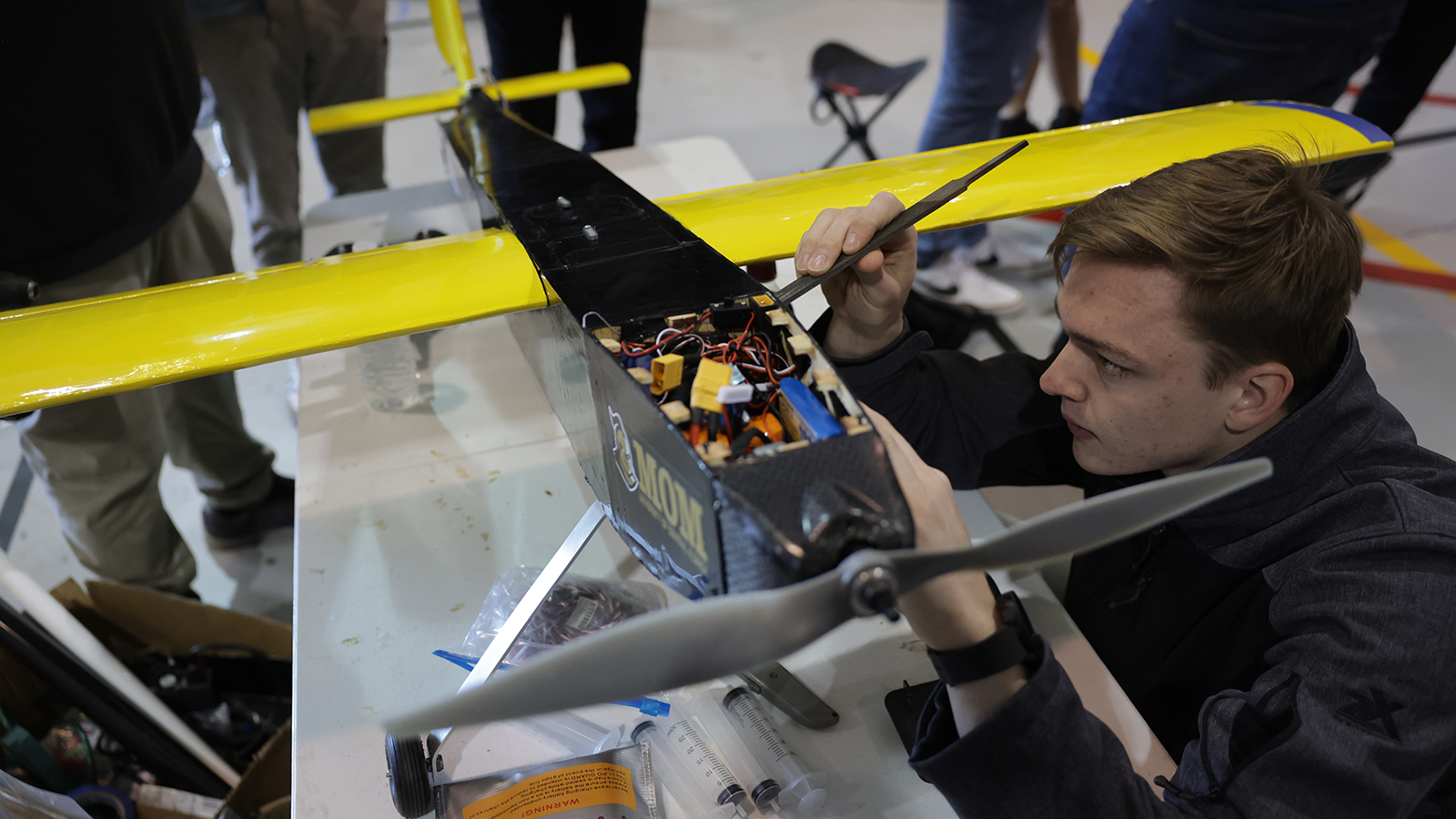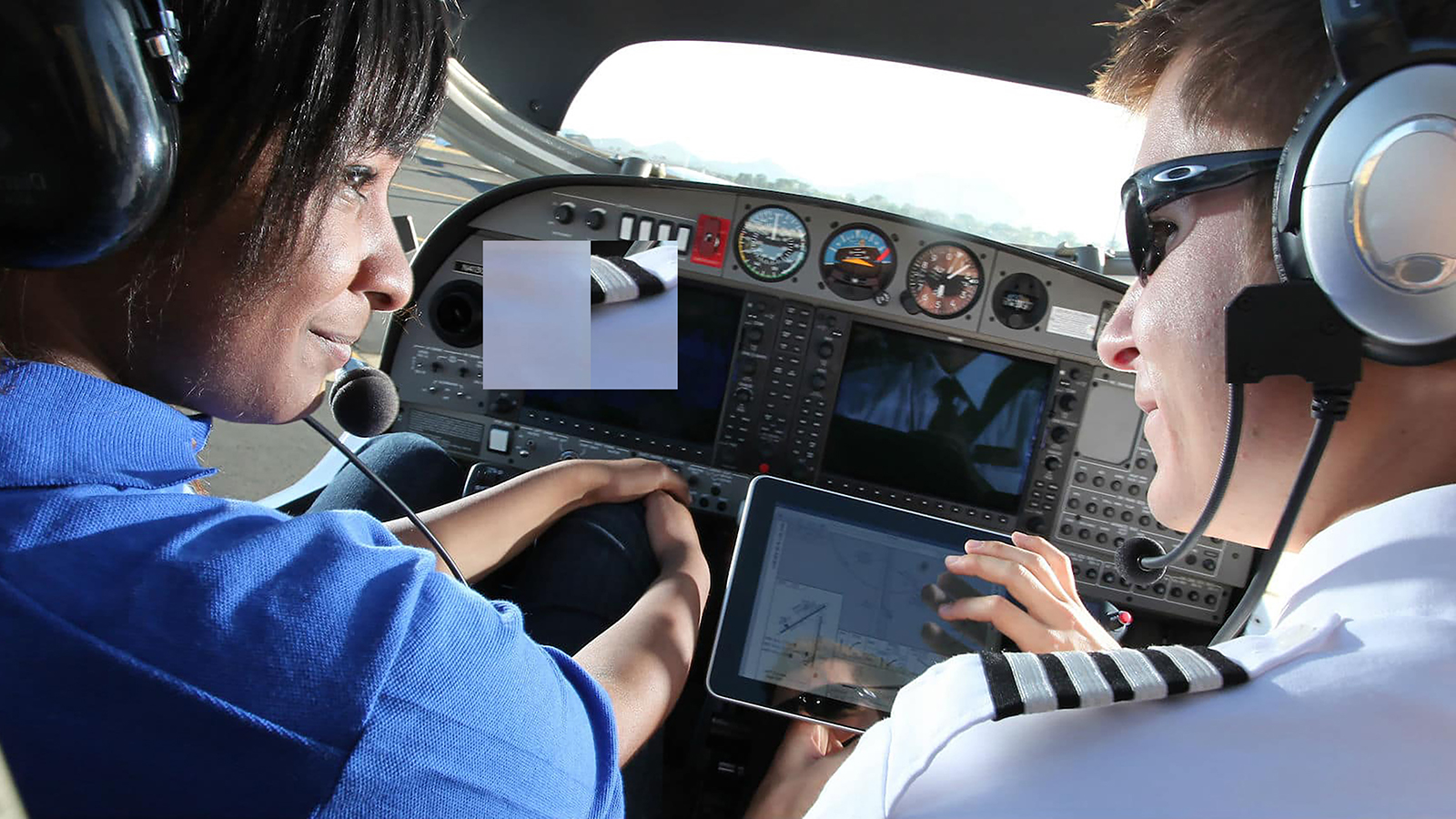Stay Up to Date
Submit your email address to receive the latest industry and Aerospace America news.
Educators and students managed to keep progress going through the pandemic with remote learning. Now it’s time to get back to largely in-person learning that leverages the best of remote learning. Amir S. Gohardani explains.
As they come out of the pandemic, school administrators and educators in the United States are facing a colossal task. The aerospace industry is counting on them to deliver the skilled, robust and diversified workforce capable of meeting current and future aerospace challenges, from exploring distant worlds and searching for life on other planets to shuttling passengers around town in electric air taxis or across continents in jets with a net-zero carbon footprint. The best way to do this will be to make a vigorous return to primarily in-person learning, with the pandemic’s remote learning tools adopted in limited circumstances and with an understanding that remote learning is not flawless. The goal must be a learner-centric strategy that starts in grade school, progresses through secondary school to the college level and even into the workforce as employee-centric continuing education.
One might question whether there is a cause for concern, given the aerospace community’s record during the pandemic of making the seemingly impossible possible. NASA flew the Ingenuity helicopter on Mars for the first time in 2021 in the first controlled flight in another planet’s atmosphere; the Johns Hopkins Applied Physics Laboratory in collaboration with NASA launched the Double Asteroid Redirection Test spacecraft last year to set up what will be the world’s first full-scale planetary defense test; the James Webb Space Telescope in January finished unfolding itself; in April, SpaceX launched an entirely civilian crew to the International Space Station. Also, passenger jets accelerated their use of sustainable aviation fuels made from nonpetroleum sources.
If things are fine, why change them? These recent feats were, of course, largely a result of pre-pandemic education. Trouble was brewing even as they were being achieved. The total industry sales revenue dropped 2.8% to $874 billion in 2020 from 2019, according to the Aerospace Industries Association’s “2021 Facts & Figures US Aerospace & Defense” report. And now, economists are warning of rising costs and slower growth.
Here in the United States, we’ll need to sharpen education, and hence the aerospace workforce, to meet the challenges ahead. Only a well-educated workforce can propel an idea from a sketch on a paper napkin into a reliable product. And of course, we need as many as possible of these talented workers to stay in the field. Sadly that has not always been the trend. Take a study that investigated this exact matter: For a thesis project in 2019, Sara Oliveira Pedro dos Santos, then a Master of Science candidate at Iowa State University, surveyed 245 enrolled undergraduate students in aerospace engineering at Iowa State to find out why they chose the aerospace major and in some cases left it. Those who left the major viewed the narrow scope of the field and career outlook as concerns. Careers in space and aviation did not look as plentiful as they initially perceived them to be, and some cited difficulty of the subjects in the aerospace curriculum. Some, however, persisted in the field in full awareness of these challenges, which suggests that we need to do all we can to equip students to persist. The ability to persist is shaped in part by the learning experience, and therefore creating a better learning experience should be a priority.
Creating a better learning experience
Learning is indeed a pathway for creating a robust and skilled workforce. But currently, the educational experience is in dire need of a change. Access to skilled educators is obviously essential, but in March, the Institute of Education Sciences, part of the U.S. Department of Education, reported that nearly 44% of public grade schools reported full- or part-time vacancies due to resignations and retirements. In the same month, an article published by the Brookings Institution think tank in Washington, D.C., highlighted “severe staff shortages” among the many different effects of the pandemic. Staff shortages and inaccessibility to qualified teaching personnel will affect the quality of teaching and, in turn, the learning experience for many years to come.
Now, more urgently than ever before, it is time to find ways to revitalize the educational sector. Work-life balance and compensation must be addressed. Despite their impactful roles affecting generations, K-12 teachers are often underpaid, overworked and overlooked.
High-quality teaching practices must be identified and nurtured. During my two decades of teaching K-12 and college-level courses in Europe and the United States, the best of us were those willing to relearn topics through the experiences of our students. Quality teaching produces impressive outcomes. I have witnessed K-12 students proposing innovative ideas such as monitoring wildfires with swarms of drones. Educators at the college level must have the opportunity to learn new teaching methods, and they must be willing to change their ways. In addition, administrators should recognize that someone who is a phenomenal researcher might need training to become a phenomenal teacher. Too often at the university level, priorities are in conflict as aerospace educators must struggle to balance teaching, research and the pressure to win grants.Aerospace educators at the college level struggle with navigating a myriad of hurdles. A professor with several hundred in an auditorium cannot give the same personal attention to each student as one with 30 students in a classroom. Of course, no matter the size of the class, the teaching methods and sequence are the roots of success. If learners are placed front and center, and a learner-centered approach is adopted, better learning outcomes will be achieved.
This learner-centered approach means that administrators and educators in all educational institutions must recognize different types of learners. Some are kinesthetic, using body movement interacting with their environments when learning. Others are auditory, meaning they understand and remember spoken words more easily than written ones. Other learners are just the opposite, preferring to learn by reading and writing down notes. Visual learners learn best by reading or viewing pictures. These four widely accepted learning modalities — kinesthetic, auditory, reading/writing and visual allow for better decision-making while crafting lesson plans. A well-thought-out lesson plan incorporates different learning modalities so different learners can digest as much material as possible. Often times, tapping into several learning modalities is helpful to reinforce crucial takeaways.
Despite the many logistical and budgetary challenges, it is, therefore, possible to craft curricula that uphold established learning outcomes while also resonating with students. Educators can, for instance, adapt their teaching through anonymous polls. In a nutshell, this is how one such tool works: A question pops up on a screen. Students are asked to text in their answers. A unique number that also serves as the text number reserved for that specific poll ensures student anonymity. A few minutes after the posted question, all student answers populate the screen in real time. This provides the educator with an opportunity to address incorrect answers and fill in the voids of knowledge. The system then automatically highlights and displays the number of students who answered correctly out of the total number of participants. This is powerful, since the educator now can ensure that by the end of that specific session or by an envisioned milestone, everyone has had a chance to learn. This type of adaptive learning is very impactful to learners and allows educators to enhance the learning experience each session continually.
The human element in education
Often, persistence and grit in students start at a very early age. When I visit schools through the Springs of Dreams Corp., a nonprofit I co-founded a decade ago with a mission to enlighten society through knowledge and education, young individuals are often fascinated by all things aerospace. While this fascination persists in high school, college-bound students often worry about their ability to succeed in the science, technology, engineering and mathematics courses required for a career in aerospace engineering. Within this STEM curricula, some students exhibit a special fear of mathematics and physics. Exactly here is where educators can make a world of difference. In one of the lessons we held in a middle school in Orange County, California, students learned the basics of flow visualization. Supported by this foundation, we translated some of the concepts discussed into simple mathematical equations.
Not surprisingly, virtual learning settings skyrocketed during the pandemic. As we contemplate the future environments for learning, we should not forget about the human connection that can get lost in virtual worlds. This connection gains meaning beyond a screen and includes a deeper connection to the topics of study. All subjects cannot effectively be learned through a webinar or online lecture. For instance, while learning to code could work in a virtual setting, running experiments in a wind tunnel via similar settings is trickier. It is, however, possible to combine the experimental learning in a wind tunnel with additional online resources for learning a topic such as aerodynamics and access the best of both worlds.
Humans typically enjoy the presence of other humans, and this goes for both teaching and learning. In the future workforce, such a human-centric approach will be crucial, given that the tedious work is likely to be taken care of by artificial intelligence and machine learning software. Inventors and subject-matter pioneers will discover that they can catapult their ideas into high dimensions by learning to team. Lately, the nonprofit Project Management Institute has updated its exam for the Project Management Professional certification to focus on the people, process and business environment. The human dimension is of particular interest as it emphasizes the soft skills needed to effectively lead a project in today’s changing environment. People operating as a team should be the ones driving technology, not the other way around.
Despite the grim effects of the pandemic, it is possible to use the lessons learned for the benefit of society. Conclusively, a learner-centered aerospace education in U.S. educational institutions has the potential to deliver a human-centric workforce that values teamwork and leverages technologies to advance the U.S. aerospace workforce in its future efforts.
Amir S. Gohardani
is co-founder of Springs of Dreams Corp., a nonprofit educational organization in Orange County, California. An AIAA associate fellow, he chairs the institute’s Society and Aerospace Technology Outreach Committee. He has a doctorate in aerospace engineering from Cranfield University in the U.K. and a college teaching certificate in learner-centered education from the University of Arizona.

If learners are placed front and center, and a learner-centered approach is adopted, better learning outcomes will be achieved.
Amir S. Gohardani
Related Posts
Stay Up to Date
Submit your email address to receive the latest industry and Aerospace America news.





